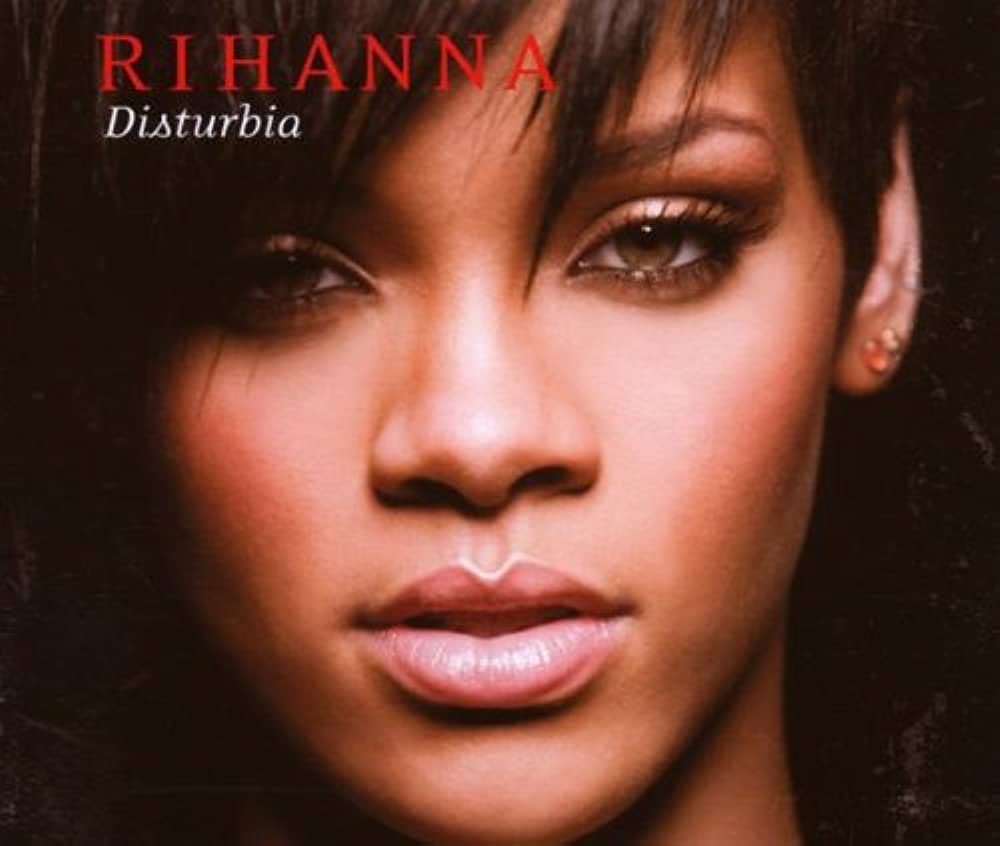
In The Number Ones, I’m reviewing every single #1 single in the history of the Billboard Hot 100, starting with the chart’s beginning, in 1958, and working my way up into the present.
At one point, word “disturbia” had an actual meaning. A pair of married mental-health professionals, Richard and Katherine Gordon, reportedly coined the term in a 1961 pop-psychology bestseller called The Split-Level Trap. To the Gordons, disturbia was a new feeling that applied to the postwar suburban landscape. The suburbs were still a new phenomenon, and the Gordons worried that the young men who moved out to the suburbs, removed from the inter-generational living of cities and towns, would be more vulnerable to heart disease. I wonder what the Gordons would’ve made of the internet.
In the late ’00s, “disturbia” became something else. It wasn’t a societal phenomenon; it was a word that showed up in places. In 2007, 19-year-old Shia LaBeouf starred in a mid-budget thriller called Disturbia, a teen-movie Hitchcock riff about a high-school kid who’s stuck at home on house arrest and who comes to suspect that one of his neighbors is a serial killer. Executive producer Steven Spielberg cast LaBeouf in the lead, and the picture made a whole lot of money and set LaBeouf up for stardom when he showed up in the first Michael Bay Transformers movie later that year. I watched Disturbia via red-envelope Netflix rental when it was still pretty new, and I remember liking it OK. I don’t remember anything else about it, though, and I’m not about to rewatch it. If Disturbia had anything to say about suburban ennui, I must’ve missed it.
The song “Disturbia” has nothing to do with the movie Disturbia, except that the writers of the song “Disturbia” must’ve seen the movie — or maybe just the movie poster — and realized that “disturbia” was a fun word to sing. On “Disturbia,” the titular word is basically just the state of being disturbed, and I’m not even sure it’s as defined as that. On paper, “Disturbia” is a song about feeling like you’re going crazy. The track never offers any reason for that feeling, and it never explores what that feeling might mean. But “Disturbia” still became a hit for Rihanna — partly because Rihanna was in the midst of a serious hot streak and partly because Rihanna can turn meaningless lyrics into something else through the sheer force of her presence.
Originally, “Disturbia” wasn’t going to be a Rihanna song. Instead, the track originated with Chris Brown, an artist who’s been in this column a couple of times. Brown, Rihanna’s boyfriend at the time, was putting together songs for the deluxe edition of his sophomore album Exclusive. That record had already yielded a few hits, including the chart-topper “Kiss Kiss,” but Brown needed more. He co-wrote “Disturbia” with Rob Allen, Andre Merritt, and Brian Kennedy — the team of regular collaborators who he called the Graffiti Artizts. (That’s a terrible name.) Brown and Merritt recorded a demo version of “Disturbia,” but Brown never released the song.
Chris Brown never released “Disturbia” because he didn’t want to compete with himself. Wrigley hired Brown to write and record a new jingle for Doublemint gum, and he and his collaborators came up with a song called “Forever.” The ad blew up, so Brown recorded a full song-length version, and it became one of his biggest hits, going all the way to #2. (It’s a 6.) “Forever” might’ve become Brown’s third chart-topper, but “Disturbia,” the song that he decided not to release, leapfrogged his single and blocked it from the top of the Hot 100.
So Chris Brown gave “Disturbia” to Rihanna. Brown told USA Today, “I just wanted to go totally left and kind of weird, and that’s what I threw at her.” (Every Chris Brown quote about Rihanna would come off very, very differently after he severely beat her on the night before the 2009 Grammys.) It’s pretty easy to imagine the Chris Brown version of “Disturbia,” but I don’t think it would’ve been any good. Brown’s not a terrible singer or anything; you can hear his voice in the backups on the Rihanna version of the track. But he couldn’t have commanded the song in the way that Rihanna did.
The lyric that people remember best from “Disturbia” isn’t really a lyric. It’s a wordless hook: “Bum bum bee dum bum, bum bee-dum bum.” Singing that riff, Rihanna leans hard into the chilly, mechanistic quality of her voice. Co-writer Brian Kennedy co-produced “Disturbia” with Makeba Riddick, who’s been in this column for co-writing Jennifer Lopez’s “All I Have” and who’s done vocal production on a lot of Rihanna songs. “Disturbia” has a thumping electro-pop beat, a simple and booming sound that was built for clubs. Rihanna had basically come up as a dance-pop singer, and the “Disturbia” instrumental sounds like a less-interesting version of “Don’t Stop The Music,” her hit from earlier in 2008. (“Don’t Stop The Music” peaked at #3. It’s a 10.) “Disturbia” doesn’t have the same force as “Don’t Stop The Music,” but Rihanna was very comfortable singing over robotic club beats.
Rihanna released “Disturbia” as one of the singles from her Good Girl Gone Bad deluxe edition. The first added-on bonus track, the accusatory ballad “Take A Bow,” had already reached #1, and “Disturbia” gave Rihanna her second consecutive chart-topper. A year earlier, “Umbrella” had turned her into a superstar, and every new Rihanna single was guaranteed to make a big impact on iTunes sales alone. But the success of “Disturbia” also has a lot to do with timing. At that moment, robotic club beats were taking over the charts.
I would love to know why the EDM boom of the late ’00s and early ’10s coincided so neatly with the 2008 financial crisis. Maybe it was a dance-like-there’s-no-tomorrow thing. When the subprime mortgage crash utterly decimated the economy, America’s millennials, many of whom were reaching adulthood and preparing to venture out into a suddenly-bleak job market, overwhelmingly turned toward hypercharged Euro-club anthems about blowing through money and losing inhibitions. Maybe the idea was that you needed to have your fun while you still could, since your future wasn’t promised.
“Disturbia” is not a song about blowing through money or losing inhibitions, but the track fit with the sleek, cybernetic sound that was coming into fashion. In a lot of ways, “Disturbia” sounds like a rough draft of the style that would soon turn Lady Gaga into a titanic star. (Gaga will appear in this column many times, and her reign will begin soon.) Since “Disturbia” reached #1 a few weeks before the financial crash really took hold, its combination of booming hedonism and feverish paranoia was at least a little bit prescient.
On “Disturbia,” Rihanna sings about the unwanted dark feelings seeping into her head: “It’s a thief in the night to come and grab you/ It can creep inside you and consume you/ A disease of the mind, it can control you/ I feel like a monster.” The track opens with an echoing scream and with Rihanna murmuring questions about what’s wrong with her. That sounds like an evocation of depression, but strictly speaking, most of the “Disturbia” lyrics aren’t about anything. They’re word salad: “Put on your brake lights/ You’re in the city of wonder/ Ain’t gonna play nice/ Watch out, you might go under.” Maybe Chris Brown and his collaborators were just trying to mess around with scary-movie archetypes, but Rihanna sings those meaningless phrases with enough full-bodied force to sell the idea of a club track about encroaching insanity.
Rihanna also communicated the whole “Disturbia” vibe in the video, which she co-directed with her longtime collaborator Anthony Mandler. There’s no narrative to the “Disturbia” clip. Instead, it’s a parade of vaguely spooky images: jail cells, all-white contact lenses, wolves, tarantulas, disappearing limbs, “Thriller”-style zombie dances. One of the extras is a drag queen with the excellent name Detox Icunt. The clip chases the aesthetics of ’90s arena-industrial types like Nine Inch Nails and Marilyn Manson, but it’s closer in spirit to something like Rockwell’s “Somebody’s Watching Me.” Just like the song, the “Disturbia” video feels like an early stab at the style that Lady Gaga would soon dominate. Rihanna looks cool in the “Disturbia” clip, but Gaga would bring the freaky visuals to new levels, and she’d inhabit those visuals more naturally.
Rihanna nodded toward those gothed-out visuals when she performed “Disturbia” at the 2008 VMAs, a few weeks after the song reached #1. That performance is a textbook example of the Rihanna effect. As Super Bowl viewers rediscovered this year, Rihanna doesn’t really try when she sings live. Instead, she holds your attention through the sheer gravitas of her own coolness while gesturing vaguely at the elaborate choreography happening all around her. She’s been doing it like that.
Other than the Chris Brown association, I don’t hear anything disturbing in “Disturbia.” Instead, I mostly think of “Disturbia” as pretty-fun haunted-house music. “Disturbia” never fully embraces darkness. Instead, the song mostly just plays around with that imagery. It’s too catchy and frothy and silly to work as any kind of major statement, and Rihanna has tons of dance-pop tracks that are far more powerful and enduring. But I do think “Disturbia” is pretty fun, as disposable club-pop songs go.
“Disturbia” doesn’t have the breathless melodic efficiency that a writer like Max Martin could’ve brought, but it does have hooks. The “bum bum bee dum bum” riff is catchy, and Rihanna sinks her teeth into it. When “Disturbia” is playing, you can sing along and jump around and then forget about it completely. The song does its job without leaving too deep of an impression. Rihanna hasn’t sung “Disturbia” live since 2012. It’s a perfectly OK song, but she’s just got too many smashes that are way, way better.
“Disturbia” might also leave a bad taste because it’s the last real artifact of Chris Brown and Rihanna’s relationship. A few months after “Disturbia” reached #1, Brown brutally assaulted Rihanna — a truly disturbing moment that immediately made a song like “Disturbia” sound trite and empty. Rihanna would continue to explore darker lyrical ideas in her music, and in the immediate aftermath of that attack, those songs would be interpreted as her reactions to her trauma, whether or not she meant them that way.
In 2009, Chris Brown referenced “Disturbia” on his very bad song “Famous Girl,” which is partly about wanting Rihanna back and which is partly a witless collection of references to more-popular songs. I truly don’t know what the fuck Chris Brown was thinking with that one. The line about “Disturbia” doesn’t even track: “I was wrong for writing ‘Disturbia,’ but I meant it in ‘Forever’/ We were ‘posed to be together, and I can’t let you go.” Maybe I should stop trying to derive any meaning from Chris Brown lyrics. Maybe there’s just nothing there.
Rihanna followed “Disturbia” with one more Good Girl Gone Bad single: the Justin Timberlake/Timbaland production “Rehab,” which sounded like a FutureSex/LoveSounds outtake and which peaked at #18. (She should’ve released “Breakin’ Dishes” as a single instead. That one goes hard.) But Rihanna’s hot streak wasn’t over. She’ll be back in this column very soon.
GRADE: 6/10


 34
34